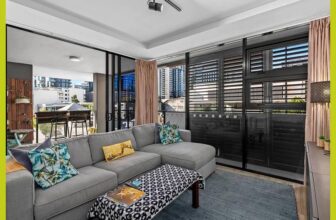
Investing in SIL Homes is a unique opportunity that combines financial returns with social impact. SIL, or Supported Independent Living, homes provide housing for people with disabilities who require support services. This type of investment is gaining popularity among property investors in Australia. However, choosing the right SIL Home for investment is crucial for maximizing returns and ensuring long-term success. In this blog, we will discuss how to choose the right SIL Home for investment.
Understanding SIL Homes
Before diving into the selection process, it’s essential to understand what SIL Homes are. SIL Homes are properties where people with disabilities live independently with the support of trained staff. These homes are funded by the National Disability Insurance Scheme (NDIS) and are designed to provide a safe and supportive environment for residents.
Why Invest in SIL Homes?
Investing in SIL Homes offers several advantages that make it an attractive option for property investors.
Stable Income
One of the primary benefits of investing in SIL Homes is the stable income it provides. The NDIS funding ensures that residents receive the necessary support services, which means that the homes are always occupied. This occupancy rate translates to a reliable rental income for investors.
Long-term Growth
The demand for SIL Homes is expected to grow in the coming years. The Australian government’s commitment to the NDIS means that more funding will be allocated to support services, increasing the need for SIL Homes. This growing demand can lead to long-term growth in property values and rental income.
Social Impact
Investing in SIL Homes is not just about financial returns; it also has a significant social impact. By providing housing for people with disabilities, investors contribute to improving the quality of life for these individuals.
Factors to Consider When Choosing a SIL Home
Choosing the right SIL Home for investment involves considering several key factors. Here are the main factors to keep in mind:
1. Location
The location of the SIL Home is one of the most important factors to consider. Look for properties in areas with high demand for SIL services. Proximity to essential services such as hospitals, public transport, and community centers can make the property more attractive to potential residents and their families.
2. Property Size and Layout
The size and layout of the property are crucial for meeting the needs of residents with disabilities. Ensure that the property is spacious enough to accommodate the required support services and any necessary modifications. Consider factors such as accessibility, the number of bedrooms, and common areas.
3. Accessibility and Safety
The property should meet the required standards for accessibility and safety. This includes features such as wheelchair ramps, wide doorways, accessible bathrooms, and other modifications to ensure that residents can live independently and safely.
4. Condition of the Property
The condition of the property is another important factor to consider. Look for properties that are well-maintained and require minimal repairs. A property in good condition will help reduce maintenance costs and ensure a positive living environment for residents.
5. Suitability for SIL Services
Ensure that the property is suitable for providing SIL services. This includes having the necessary infrastructure and space to accommodate support staff and any required equipment. The property should also meet the regulatory requirements for SIL Homes.
6. Demand for SIL Homes
Research the demand for SIL Homes in the area. High demand indicates that there is a need for more SIL properties, which can lead to stable occupancy rates and reliable rental income. Consider factors such as population growth, the prevalence of disabilities in the area, and the availability of NDIS funding.
7. Regulatory Compliance
Ensure that the property complies with all relevant regulations and NDIS guidelines. This includes meeting the required standards for safety, accessibility, and support services. Compliance with regulations is essential for maintaining NDIS funding and ensuring the long-term viability of the investment.
8. Partnership with SDA Providers
Working with professional SDA (Specialist Disability Accommodation) providers is essential for managing the operational aspects of SIL Homes. These providers have the expertise to ensure that the homes meet the required standards and that residents receive the necessary support services. Partnering with a reputable SDA provider can streamline the investment process and ensure compliance with NDIS guidelines.
9. Financial Considerations
Understanding the financial aspects of investing in SIL Homes is crucial for maximizing returns and managing risks.
Purchase Price
Consider the purchase price of the property and whether it aligns with your budget and investment goals. The purchase price should be competitive and offer good value for money.
Ongoing Costs
Factor in the ongoing costs of maintaining the property, including repairs, maintenance, and utilities. These costs can impact the overall profitability of the investment.
Potential Returns
Calculate the potential returns on your investment in SIL Homes. Estimate the rental income based on the NDIS funding rates and occupancy levels. Consider the potential for capital growth by researching property value trends in the area.
10. Future Growth Potential
Investing in SIL Homes is a long-term commitment. Plan for future growth by considering properties that can be expanded or adapted to meet changing needs. Stay ahead of market trends and anticipate future demand to ensure that your investment remains profitable.
Conclusion
Choosing the right SIL Home for investment involves considering several key factors, including location, property size and layout, accessibility and safety, condition of the property, suitability for SIL services, demand for SIL Homes, regulatory compliance, partnership with SDA providers, financial considerations, and future growth potential. By carefully evaluating these factors, you can select the right SIL Home for investment and maximize your returns.
Investing in SIL Homes is not just a financial investment; it’s an investment in the community and the future. By understanding the key factors involved in choosing the right SIL Home, you can ensure that your investment is both profitable and impactful.







